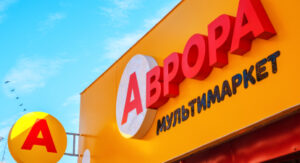
Exports of timber and timber products from Ukraine since the beginning of 2025 amounted to 1.42 million tons, worth $671.8 million, which is 6% or 81.7 thousand tons more than in the same period of 2024, according to the State Customs Service (SCS). The State Customs Service (DMS) press service reported this.
The agency noted that pine products accounted for the largest share of exports (68.6% of the total), followed by spruce (19%) and oak (6.6%).
At the same time, since the beginning of 2025, customs authorities have detected violations amounting to more than UAH 31.4 million. In early May 2025, in cooperation with the State Forestry Agency, a whole scheme of illegal export of 2.9 thousand cubic meters of timber worth UAH 13.6 million was uncovered. In all 98 cases, business entities from one of the country’s regions submitted certificates of origin for timber issued for other consignments of goods to the customs authorities for the export of timber. In all cases, reports on customs violations were drawn up against the entrepreneurs, according to the State Customs Service.
To systematically eliminate the conditions for such violations, the State Customs Service, together with the Ministry of Environmental Protection and the State Forestry Agency, is preparing proposals for legislative changes that will provide customs authorities with automatic access to information submitted by exporters to obtain certificates.
The State Customs Service added that since the start of the full-scale invasion, confiscated timber worth UAH 14.2 million has been transferred to the defenders of Ukraine.

On Tuesday, the European Commission (EC) put forward a proposal to integrate Ukraine into the EU roaming zone from January 2026.
“We want Ukrainian citizens to stay connected with their loved ones across the EU, as well as in their home country. That is why we are offering Ukraine to join our roaming family. We reaffirm our unwavering commitment to supporting Ukraine and its citizens,” said EC President Ursula von der Leyen.
According to the European Commission’s press release, the implementation of its proposal will allow Ukrainians to call, send text messages, and use their mobile data from Ukrainian phone numbers in 27 EU countries at no extra cost. The same benefits will apply to Europeans who may be in Ukraine.
“Roaming is the first sector in which the EU will extend the internal market regime to Ukraine. In practice, this means that travelers from Ukraine visiting the EU and travelers from the EU visiting Ukraine will not pay any additional roaming charges. All mobile services, including calls, text messages, and data, will be charged at domestic rates,” Brussels explained.
The EC has sent its proposal to the EU Council for approval. According to the proposal, Ukraine will effectively join the EU’s “Roam Like at Home” zone on January 1, 2026, the European Commission said.

Ukraine is preparing to announce a tender for the development of the Dobra lithium deposit, which could become the first project within the framework of cooperation with the US, according to the head of the President’s Office, Andriy Yermak.
“Ukraine is preparing to announce a tender for the development of the Dobra lithium deposit in the Kirovohrad region. This could be the first project within the framework of cooperation with the US. I am glad to see that the process is moving forward and that the results of our meetings in Washington a week ago are turning into concrete actions,” Yermak wrote on Telegram on Wednesday.
For more details on the prospects for rare earth element mining in Ukraine, see the video from the Experts Club analytical center – https://www.youtube.com/watch?v=UHeBfpywpQc&t

A legal conflict over share contributions for construction projects started after 2021 is causing housing prices to rise and slowing down investment activity, according to the Ukrainian Association of Developers.
The repeal of Law No. 132-IX, which abolished share contributions for projects whose construction began after January 1, 2021, was supposed to help reduce housing prices and stimulate investment activity. However, in practice, the industry has encountered a situation where communities are demanding, including through the courts, the payment of share contributions for projects for which construction permits were obtained before that date but construction began later. In particular, the Department of Economy and Investment of the Kyiv City State Administration is the plaintiff in 152 court cases seeking to recover equity contributions from construction customers.
As of March 1, 106 such cases were pending in courts of various instances for projects launched in 2020-2022 worth approximately UAH 1.59 billion.
“In 2019, the authorities officially recognized that equity participation had become a source of corruption, and therefore Law No. 132-IX was adopted to abolish it. This was a principled position of the state – to eliminate a quasi-tax on real estate, which was actually paid by home buyers. This decision contributed to a reduction in housing prices and was intended to stimulate investment activity in the industry. Despite the clear official position of the Ministry of Community and Territorial Development of Ukraine, the authors of the law on the abolition of equity participation, and the relevant committee of the Verkhovna Rada, the prosecutor’s office and local authorities continue to ignore the provisions of the current legislation,” said Yevgeny Favorov, chairman of the board of the Ukrainian Association of Developers, to Interfax-Ukraine.
A fixed property tax is proving to be very effective for community development.
The head of the Verkhovna Rada Committee on Organization of State Power, Local Self-Government, Regional Development, and Urban Planning, Olena Shulyak, one of the authors of Law No. 132-IX, emphasized that even at the stage of abolishing share participation, there was a compensatory alternative, namely a fixed property tax. This tool has much higher potential for solving infrastructure problems, is easier to administer, and has significantly lower corruption risks than the share contribution.
“In fact, the share of equity participation in local budget revenues was very small — about 1%. These funds were not used for the construction of new kindergartens, schools, and other infrastructure, and the intended use of these funds was not controlled. Therefore, we have a property tax. I would not say that this is a universal compensatory measure, but we can now see that, in terms of figures, it already exceeds it many times over. Thus, in 2020, it amounted to 5.7 billion, in 2021 – 7.8 billion UAH, in 2022 – 7.1 billion UAH (despite the war), in 2023 – 9.1 billion UAH, in 2024 – 10.7 billion UAH, and in 2025 (as of now) – 4.3 billion UAH. In terms of share contributions, we see the following figures: in 2020, share participation funds amounted to 1.4 billion UAH, in 2021 – 572 million UAH, in 2022 – UAH 134 million, in 2023 – again UAH 134 million, in 2024 – UAH 199 million, in the current year (as of now) – UAH 159 million,” Shulyak said.
She emphasized that equity participation as a tool had long been ineffective, which is why it was abolished at the legislative level.
“But this does not mean that communities do not have the right to defend their interests in court when it comes to cases covered by the old legislation. Indeed, some communities, in particular Kyiv, remain active in legal disputes over equity participation – these are situations where objects received permits before 2020 but were completed later. In such cases, the legal basis for claims is most often Article 1212 of the Civil Code of Ukraine, which deals with unjustly retained property. As for other communities, we do not yet have centralized statistics on the number of claims,” Shulyak said.
At the same time, in her opinion, if the agreement on the payment of a share was not concluded before the law on its cancellation came into force, such charges are unfounded.
Regarding projects where the participants have changed during this period, she noted that if the new construction customer carries out construction in accordance with the construction permit issued to the previous customer before January 1, 2021, there are no grounds for non-payment of the share participation. However, if the construction permit was obtained after January 1, 2021, the share participation is not payable.
“If the construction customer is implementing a completely new project in terms of functionality, etc., then in this case it is more expedient to terminate the previous permit and obtain a new one. Thus, the new permit will be obtained after January 1, 2021, and the construction customer will not have any obligations to pay the share contribution,” Shulyak recommends.
Conflict: permit obtained before the share contribution was canceled, construction started after.
According to experts from the Association of Developers, when the share contribution was canceled, a legal conflict was identified that created a legal loophole in the regulation of the relevant legal relations. This was directly acknowledged by the Supreme Court in its decision of July 20, 2022, in case No. 910/9548/21, which states: “Law No. 132-IX does not regulate issues of share participation in cases where construction of the facility began after January 1, 2021.” At the same time, by providing its own interpretation of these legal relations, the court effectively departed from the essence and intention of the legislator, which was to completely eliminate equity participation as a quasi-tax on real estate.
On May 14, 2025, in case No. 320/44099/23, the Supreme Court finally confirmed that the changes to the procedure for attracting and using share contributions adopted by the Kyiv City Council in 2019-2020 are unlawful and invalid. In other words, with this decision, the Supreme Court confirmed that the legal basis used by the city authorities since 2019 to calculate share participation, conclude relevant agreements, or issue financial claims is unlawful, i.e., illegal.
“In addition to the legally unfounded position of the city authorities, another important aspect should be noted. The city already receives billions of hryvnia from developers and home buyers in the form of engineering, transport, and social infrastructure facilities that have been built and transferred to municipal ownership,” Favorov noted.
The cities have received new engineering infrastructure worth billions of hryvnia, but the issue of transferring it to the social balance sheet has not been resolved, experts noted.
According to estimates by the Ukrainian Association of Developers, in just eight projects by five member companies in Kyiv, engineering, transport, and social infrastructure worth more than 5.6 billion hryvnia has already been created. The total cost of all the infrastructure that city developers have built over the years is estimated at tens of billions of hryvnia, Favorov said.
Many of these assets are transferred to the balance sheet of municipal enterprises, which not only receive them free of charge but also receive a stable income by charging residents for the maintenance of the built networks.
As for social infrastructure, such as kindergartens and schools, their creation is required by building regulations, but there is no de facto procedure for transferring such facilities to communities.
Anna Laevskaya, commercial director of Intergal-Bud, spoke about two precedents when the company tried to negotiate with city authorities regarding educational infrastructure—a kindergarten in the Parkovye Ozera residential complex in the Dniprovsky district and in the Yaskryvy residential complex in the Minsk district.
“In Parkovye Ozyora, we offered to transfer to the city a turnkey kindergarten with 120 places, complete with furniture, dishes, and toys. All that remained was to take it on the balance sheet and open it. At that time, equity participation was in effect, the city was in dialogue with us, and possible options were discussed for accounting for the kindergarten as part of a share contribution or providing other preferences for the developer. But at the moment of signing the deed of transfer, that is, in essence, the legal transfer to the city, it became clear that there were no legal possibilities to count it as a share contribution. We had to return the kindergarten through the courts,” she stated.
A similar story happened with a kindergarten in the Obolonsky district. When forming the request, the district planned to take it on the balance sheet, but later reported that there was no legal basis or budgetary funds to open a new educational institution. The companies were advised to immediately plan for a private operator, which is what happened.
“The only option now is to invite a private operator to cooperate on the social infrastructure facilities that have been built, and this has disadvantages for everyone,” says Laevskaya.
For the developer, these facilities have an extremely low payback period of 15-25 years. They are not commercially viable, but they are necessary for the developer’s reputation. Residents would gladly choose municipal schools and kindergartens in buildings owned by the developer, but instead they have no choice but to pay a private operator of an educational institution between 15,000 and 25,000 hryvnia per month.
Laevskaya cited Hatne as a positive example of cooperation with local authorities. To resolve the issue of social infrastructure, the developer invested in the renovation and expansion of an existing school.
However, in general, the abolition of share contributions has not solved the problem of urban renewal. Ukraine still lacks a legal framework for transferring infrastructure created by developers to communities. In particular, Intergal-Bud has invested more than UAH 800 million in engineering infrastructure, including collectors, road repairs, lighting, and the reconstruction of water pumping stations and electrical substations. This does not include social facilities and the improvement of adjacent green areas (Nivki Park, the lake, etc.).
But what is happening now, attempts to retroactively charge additional fees, only exacerbate the already difficult situation of the most acute housing crisis in the history of independent Ukraine. According to experts from the Ukrainian Association of Developers, such practices cause housing prices to rise, as they create a double, unpredictable financial burden on companies, which are forced to include these costs in the price per square meter.
“These costs cannot be predicted within the business model, as national legislation explicitly prohibits equity participation. The country’s political leadership bears particular responsibility in this situation, having publicly promised voters that it would abolish equity participation and improve the investment climate. However, in practice, this turned out to be a declarative gesture that was only partially implemented in real law. What we are seeing today directly contradicts the state’s stated goals of deregulation, support for the construction industry, and ensuring affordable housing,” Favorov noted.
According to experts from the Association of Developers, the situation can be remedied.
It is necessary to eliminate the legislative conflict and clearly stipulate that for construction projects that were started before January 1, 2021, and which, as of January 1, 2021, have not been accepted for operation, share participation agreements between developers and local authorities were not concluded before January 1, 2021, the payment of share participation shall not be accrued or made.
“This will be in line with the original intention of the legislator – to eliminate the quasi-tax and stimulate the development of the construction industry,” Favorov stressed.
The Ukrainian Association of Developers was founded in 2023. The association’s members implement projects that account for 26% of the Ukrainian market and 93% of the capital’s market.
https://drive.google.com/file/d/1w0XEn7Nw5q6TKFTM3mceLKIDCr-qebOn/view

The Ministry of Agrarian Policy and Food has allocated sugar quotas for export to European Union countries, which will remain in effect until August 5, 2025, according to the ministry’s press service.
According to the report, the sugar quota has been distributed among exporters in proportion to their actual exports of this product to EU countries in January-May 2025.
The quotas were allocated to the following companies: TOV “Radehivsky Sugar” — 3,977.6 tons, TOV “Tsukoragroprom” — 1,700.9 tons, TOV “PK ”Zorya Podillya” — 927.6 tons, PJSC “Teofipol Sugar Plant” — 915.1 tons, LLC “Narkevychi Sugar Plant” — 688.8 tons, LLC “Novoorzhytskyi Sugar Plant” — 598.4 tons, LLC “Starokostiantynivtsukor” — 451.6 tons, LLC “Shamraivsky Sugar” — 381.5 tons, LLC “Shepetivka Sugar” — 349.5 tons, LLC “Signet-Center” — 259.4 tons, LLC “Agrocomplex ”Green Valley” — 216.5 tons, Kraievyd LLC — 184.2 tons, Novomyrhorodsky Sugar LLC — 140.7 tons, Prisma-14 LLC — 121.7 tons, and Krasylivsky Sugar Plant PJSC — 94.0 tons.

The Ukrainian chain of one-dollar stores Aurora (Vygidna Pokupka LLC) will invest UAH 3.2 billion (including VAT) in 2025, including UAH 1.3 billion in the restoration of the WestGate logistics center, according to the chain’s CEO Taras Panasenko.
“This is Aurora Multimarket’s response to the intensified attacks on Kyiv. We are investing. In 2024, we invested UAH 2.7 billion (including VAT) in Ukraine. The investment plan for Ukraine for 2025 is more than UAH 3.2 billion (including VAT),” he said on Facebook.
According to him, all the necessary permits have already been obtained, and Aurora has begun rebuilding the WestGate logistics center in the village of Stoyanka near Kyiv, which was completely destroyed in 2022.
“This is the same logistics center that was bombed by the Russians, where the GoodWIne warehouse was located. This year, investments in the reconstruction of WestGate will amount to more than UAH 1.3 billion. The rest will be invested in the network and technology. We will rebuild and create a thousand new jobs here. We plan to launch by January 2026,” he said.
In total, the company plans to create more than 2,500 new jobs in Ukraine in 2025.
“Our partners, Ukrainian manufacturers, of which there are currently more than 600, are also investing and creating new jobs. In addition, thanks to the active development of the Romanian company, our partners, Ukrainian manufacturers, are exporting to the European market for Aurora in Romania. We will stand firm,” Panasenko emphasized.
As reported, Aurora’s revenue for 2024 increased by 42.5% to UAH 38.5 billion (excluding VAT). In the first quarter of 2025, revenue grew by 32.5% to UAH 10.6 billion.
Aurora was founded in 2011 by Zhydenko, Taras Panasenko, and Lesya Klymenko. At the end of 2024, the chain had over 1,600 stores in Ukraine and 30 in Romania. The retail chain’s head office is located in Poltava.
According to Opendatabot, the owner of Vygidna Kupivlya LLC, which develops the chain, is the Cypriot company Avrorailt Investmens Limited, whose beneficiary is Zhydenko.